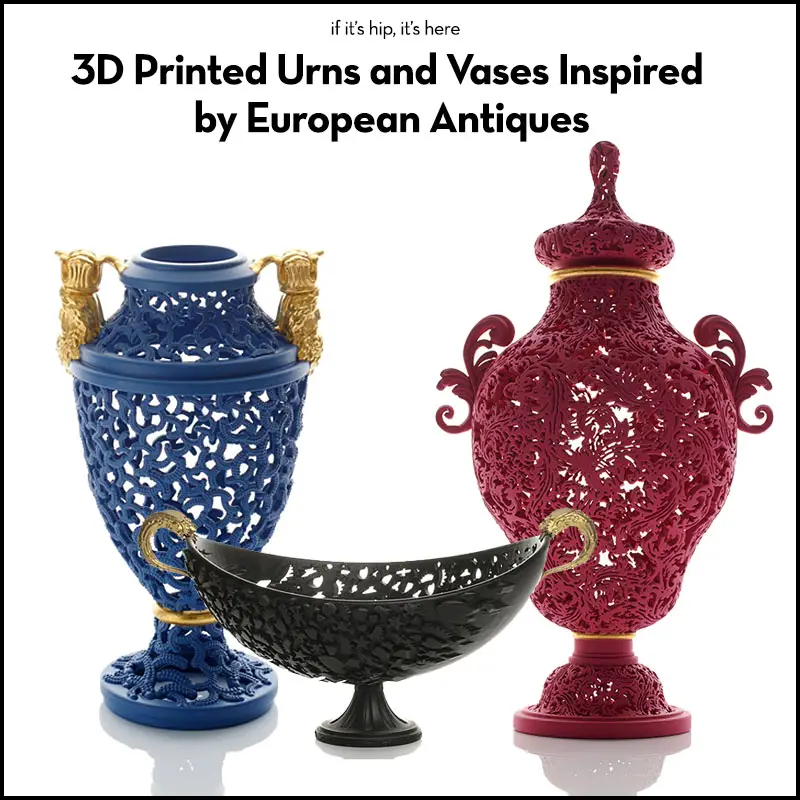The first question out of most people’s slack-jawed mouths upon seeing these for the first time is “what are they made of?” When told they’re made of sintered nylon using various 3D software programs and the latest 3D printing technology, they are blown away. So were we. Maker Michael Eden’s contemporary versions of classic porcelain and ceramic European antiques are as innovative as they are attractive.
3D Printed Urns and Vases
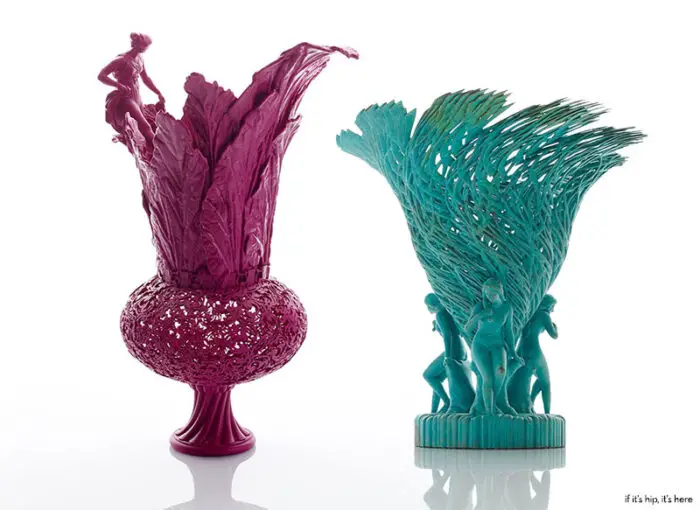
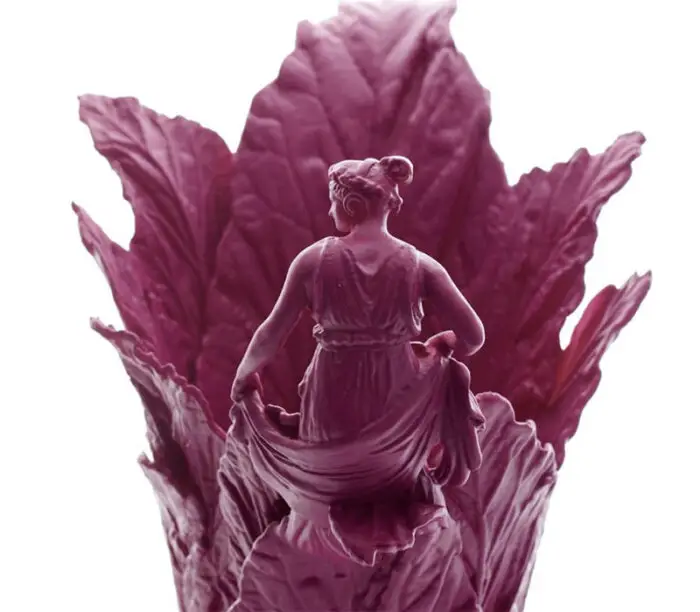
Inspired by Jacques Saly* and the pieces from porcelain manufacturers Sevres, Wedgewood and Staffordshire among others, artist Michael Eden’s vases and urns are a modern take on classic antique objets d’art that utilize the latest three dimensional manufacturing technologies.
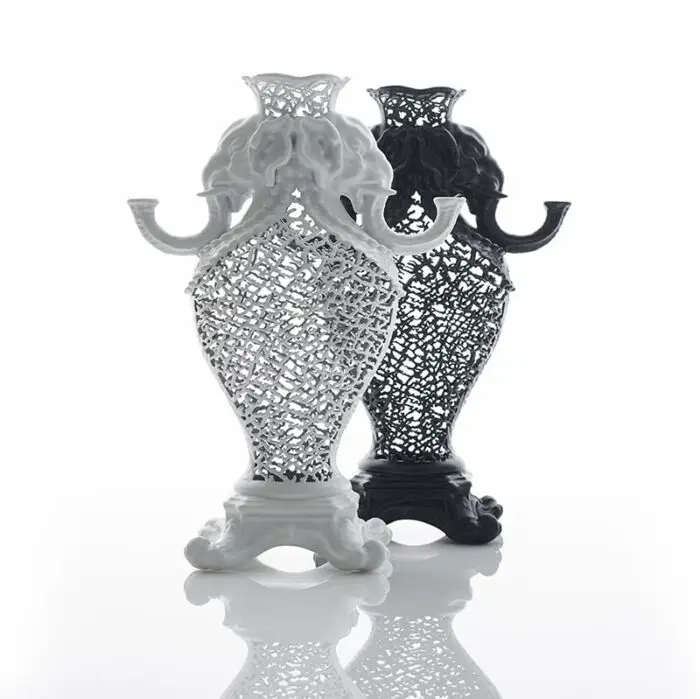

The contemporary pieces are painstakingly created through a series of drawings, then virtual modeling using various types of 3D software and finally the pieces are manufactured from a high quality nylon material with a soft mineral coating. The piece is then hand-finished and in some cases, applied with 24k gold leaf.

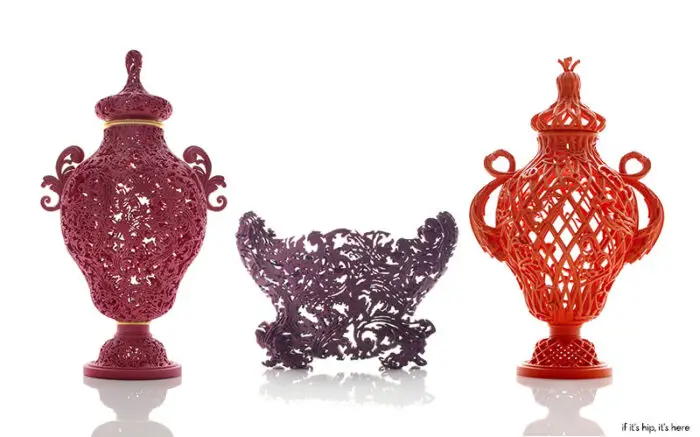
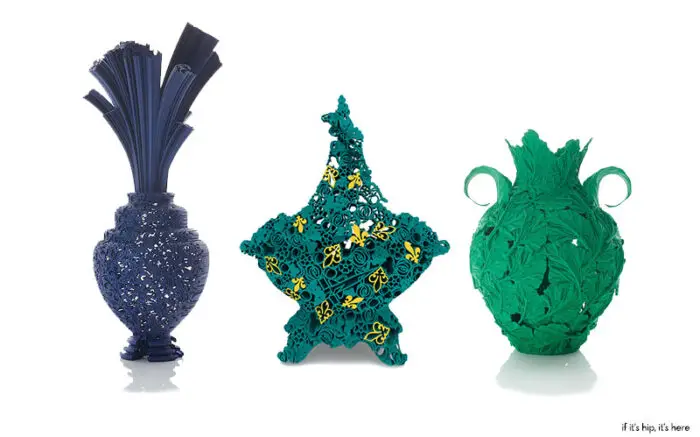
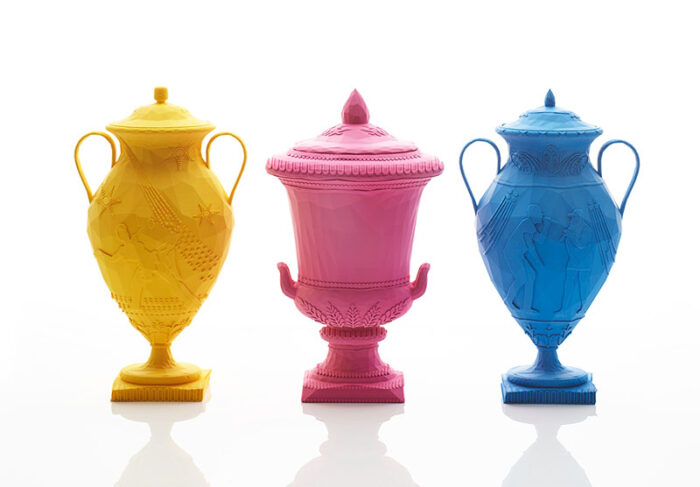
Many of the pieces here are from the artist’s 2018 solo exhibition, Form and Transform, at the UK’s Waddesdon Manor. Here he was inspired by the exuberance of the Saly creations and made use of the 3D scans of a number of Sèvres ceramics that were made for him of pieces from the Waddesdon Manor collection. The form of the vases were drawn by hand using 3D CAD software, which enables 2D line drawings to be translated into 3 dimensional structures.
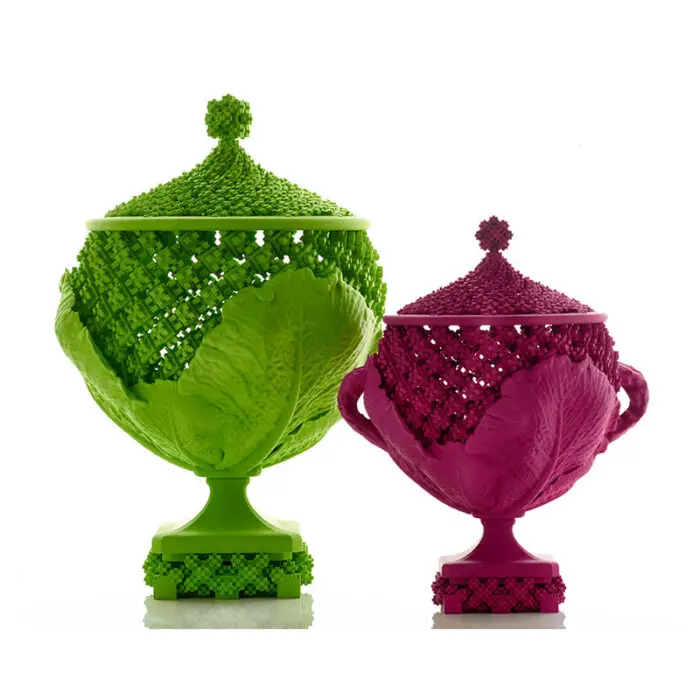
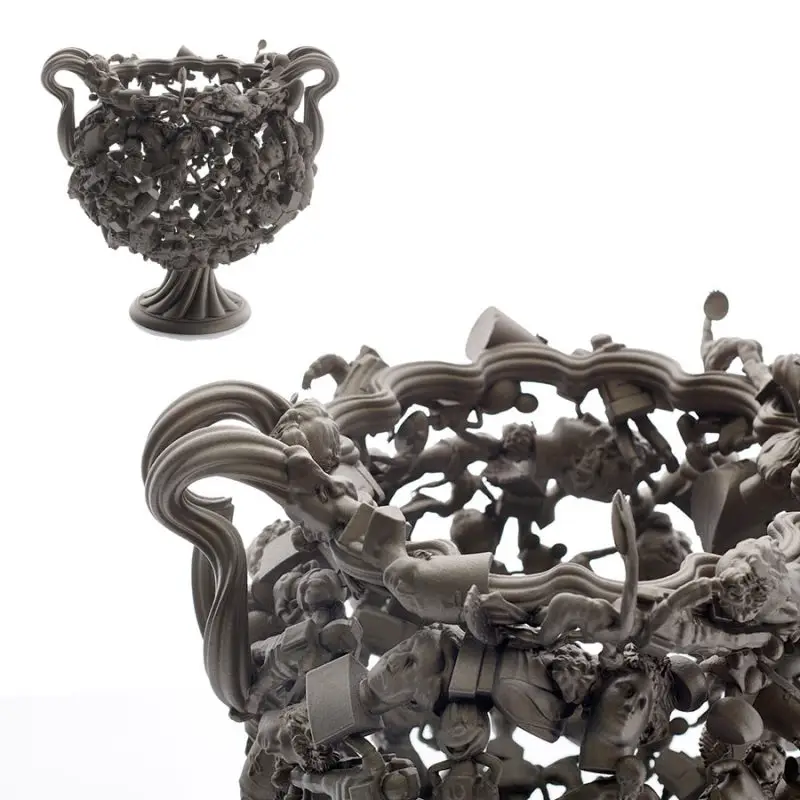
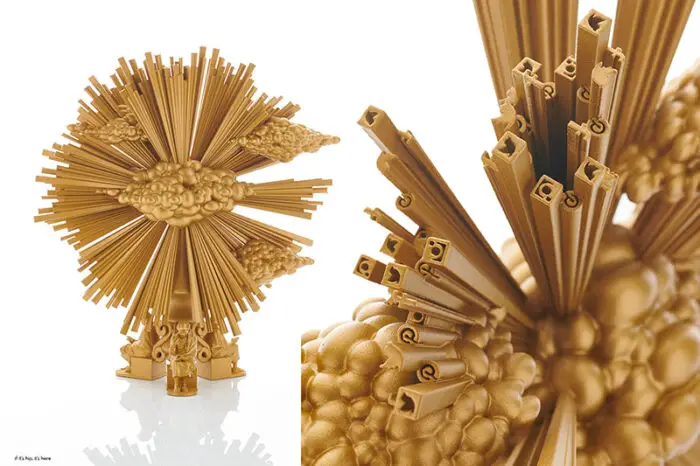
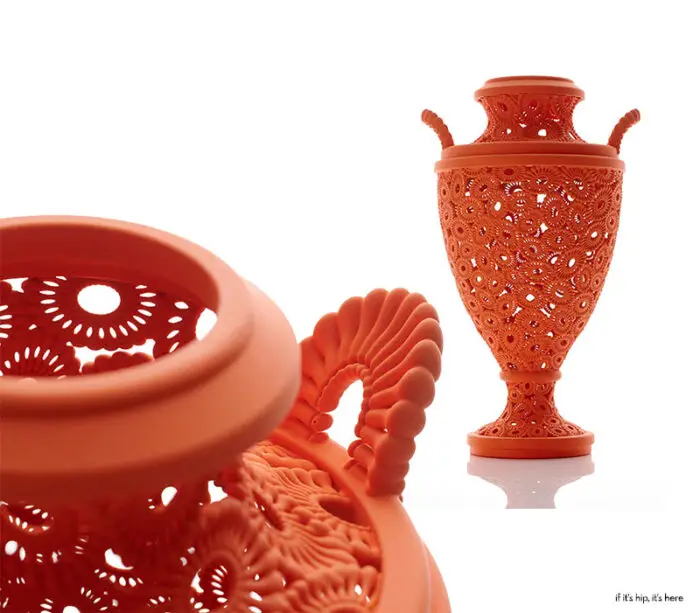
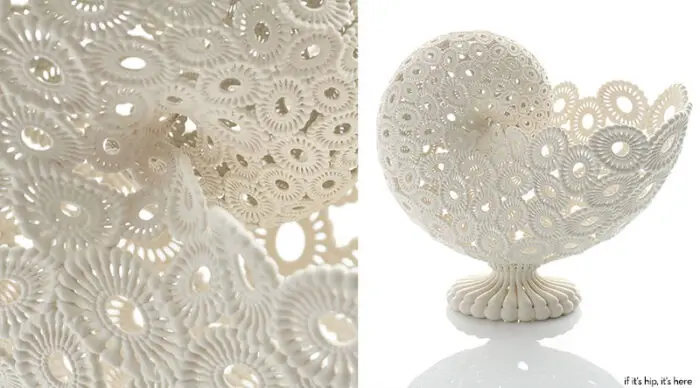
The drawing process requires numerous iterations before the artist is happy with the final version. After the intense and time consuming design development, the data is then checked with special software to ensure compatibility so that the object can be successfully 3D printed. The software sliced the data into thousands of 0.08mm layers and then slowly builds each layer of material (in most cases, nylon) until the piece is complete. It is then hand finished and coated.
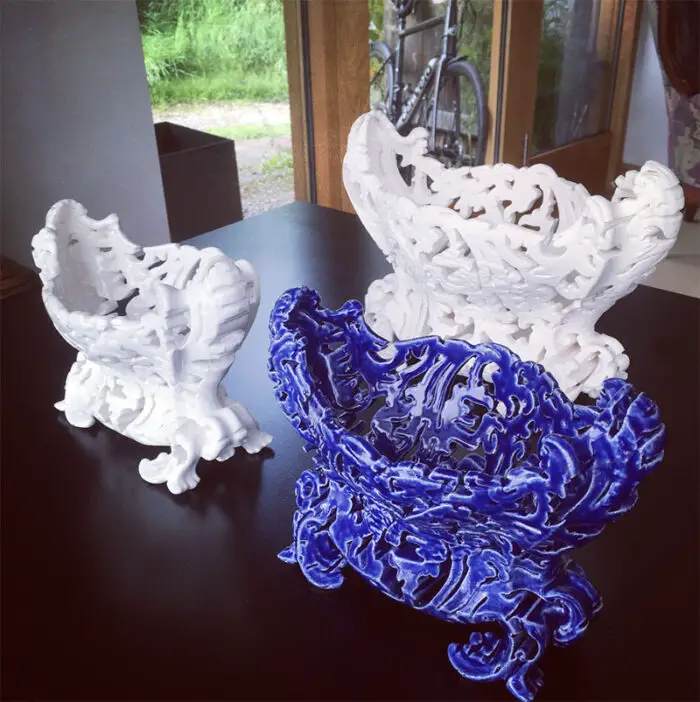
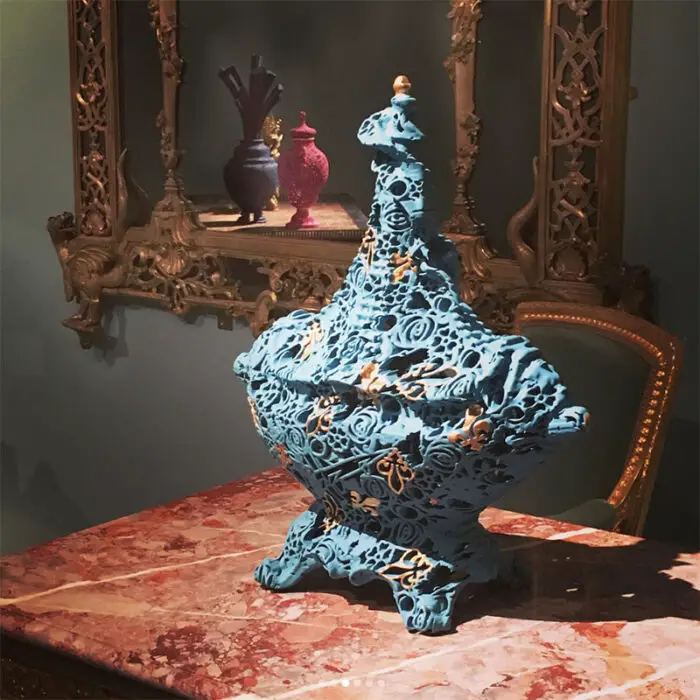
About the artist (from his website):
Michael Eden is a maker whose work sits at the intersection of craft, design and art, exploring contemporary themes through the redesign of historical, culturally familiar objects utilising digital manufacturing and materials. An MPhil research project at the Royal College of Art allowed him to explore how his interest in digital technology could be developed and combined with the craft skills that he had acquired during his previous experience as a potter.
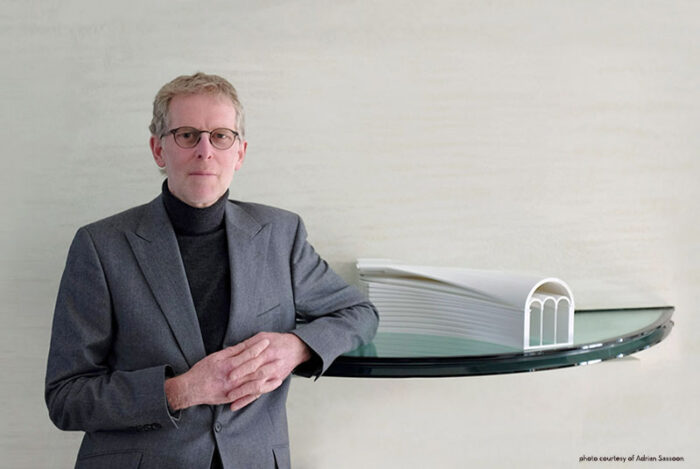
Through this he investigates the relationship between hand and digital tools. He is particularly interested in how the tacit knowledge and sensibility to the 3 dimensional object, developed through extended ceramic practice can affect and influence the approach to the creation of objects using digital technology.
As a member of a unique generation that has bridged the digital divide, he firmly believes that he is able to contrast and compare life before and after the invention of the personal computer. For Eden it is a matter of choice, as life at the beginning of the 21st century has furnished makers with a wider choice of tools, materials and processes with which to realise ideas and concepts. All have their place, the new does not replace the old; the key is to make appropriate use of them.
Michael Eden is Represented by Adrian Sassoon. Please contact the gallery to discuss his works for sale and exhibition opportunities.
*Jacques Saly was an 18th century French sculptor who drew a series of ornamental vases (vases inventés), which he later engraved and bound in a single volume.
images courtesy of Michael Eden’s website, his Instagram feed and Adrian Sassoon.
